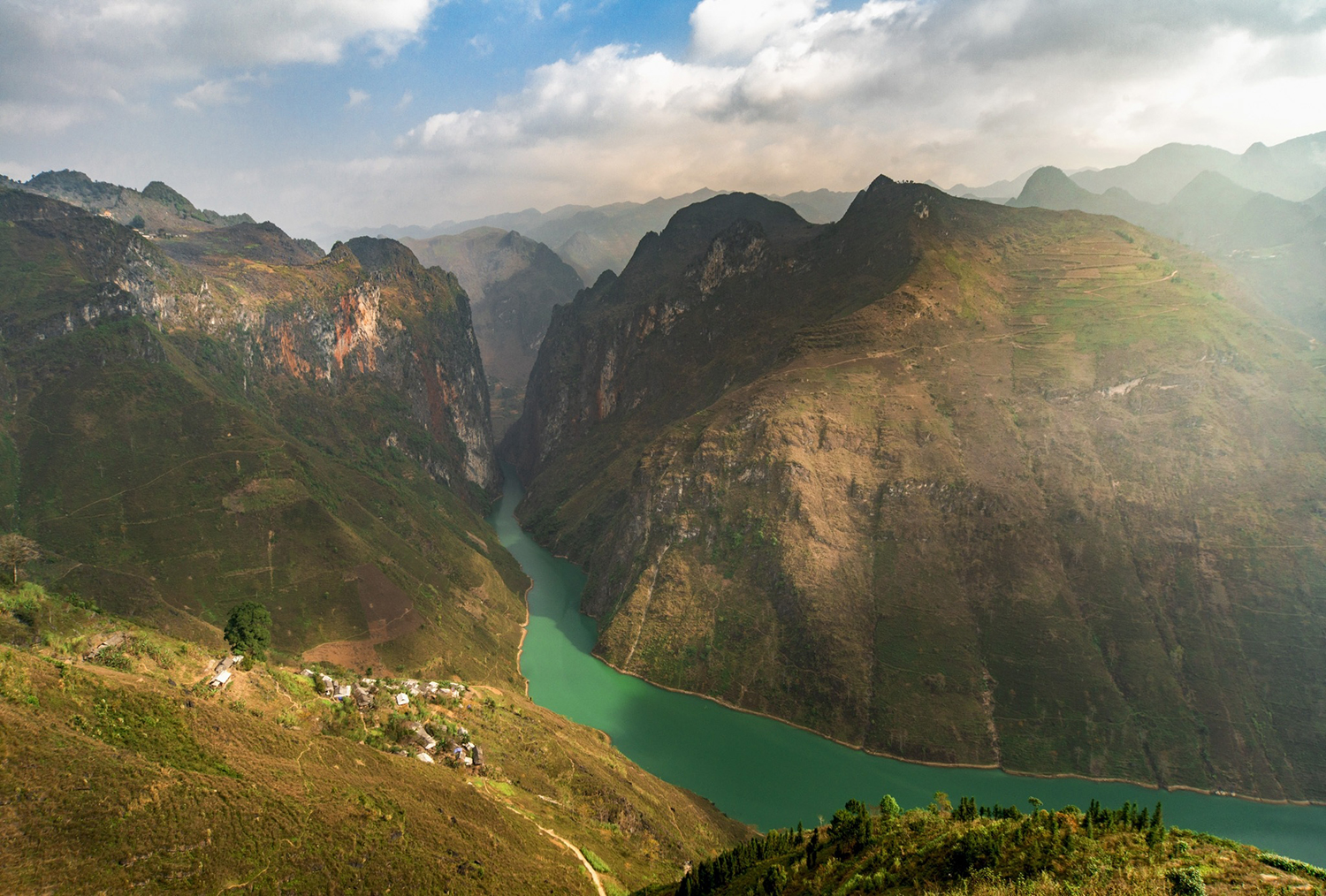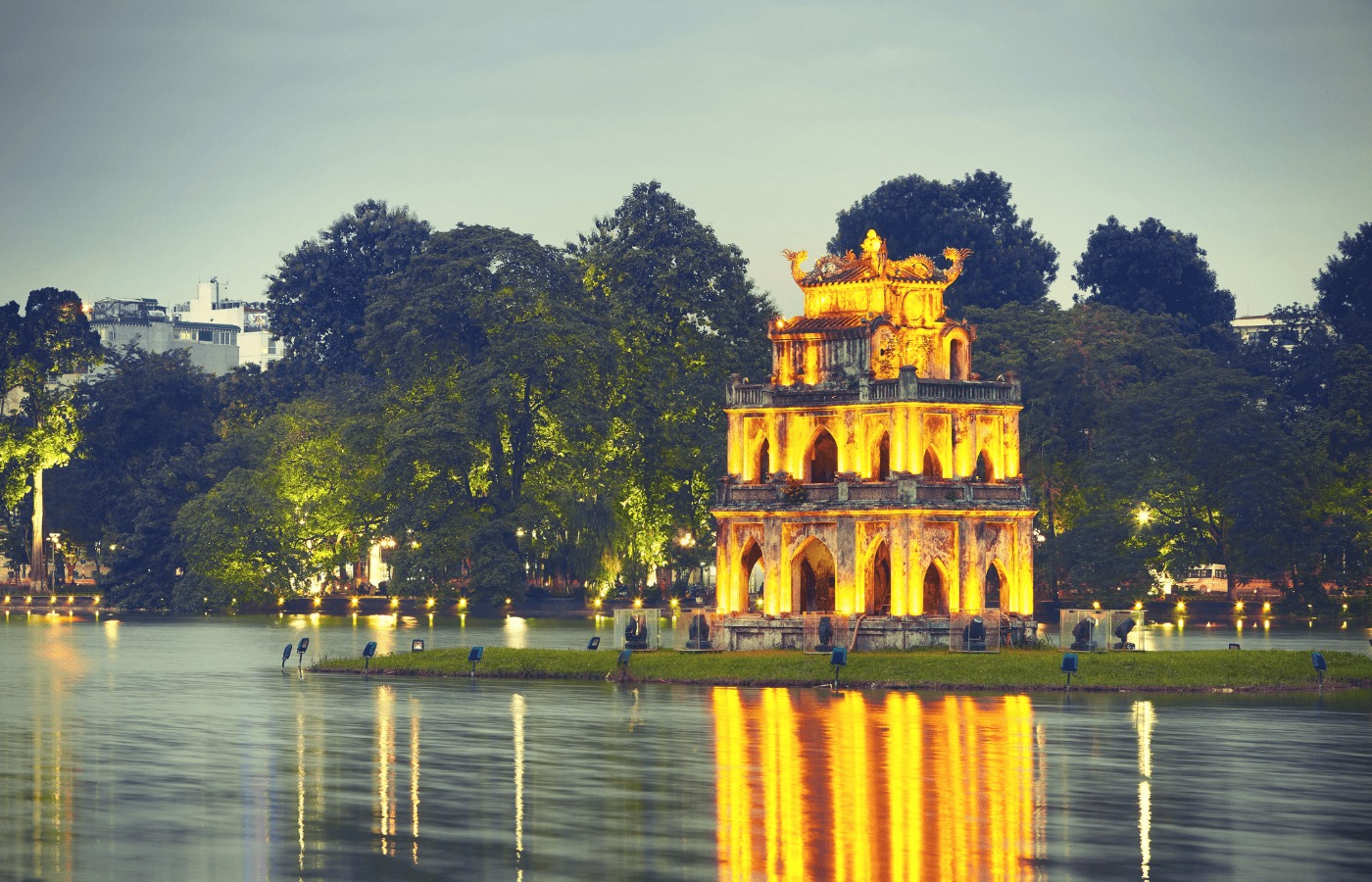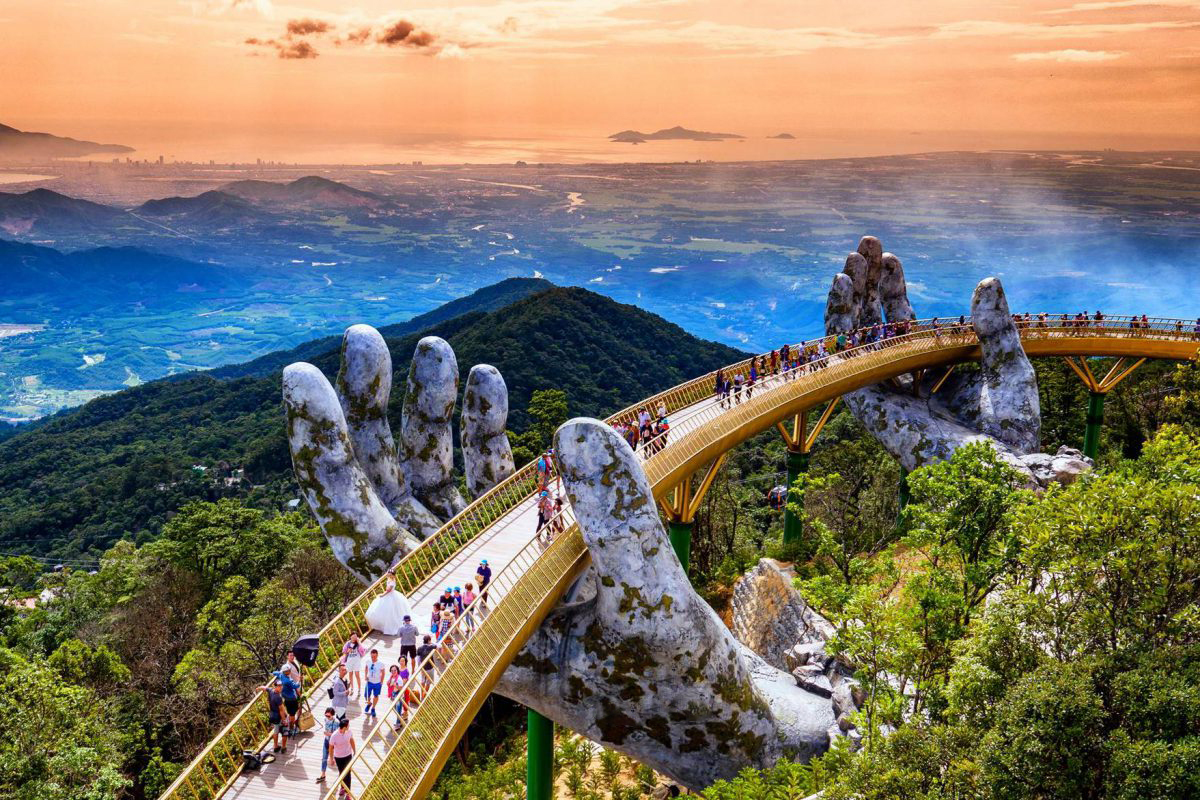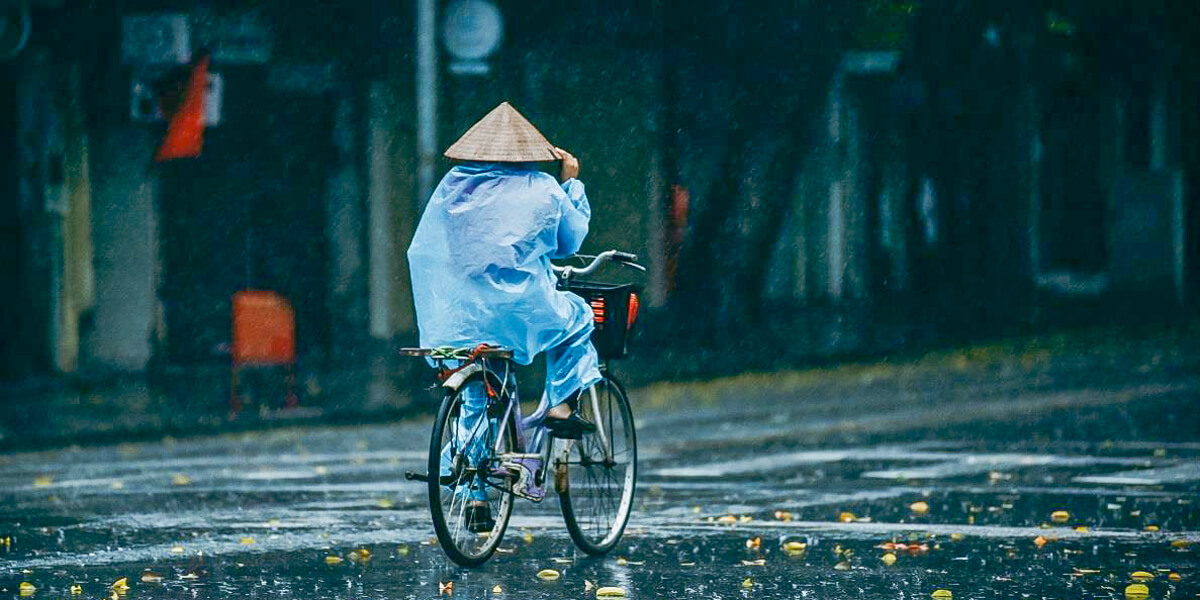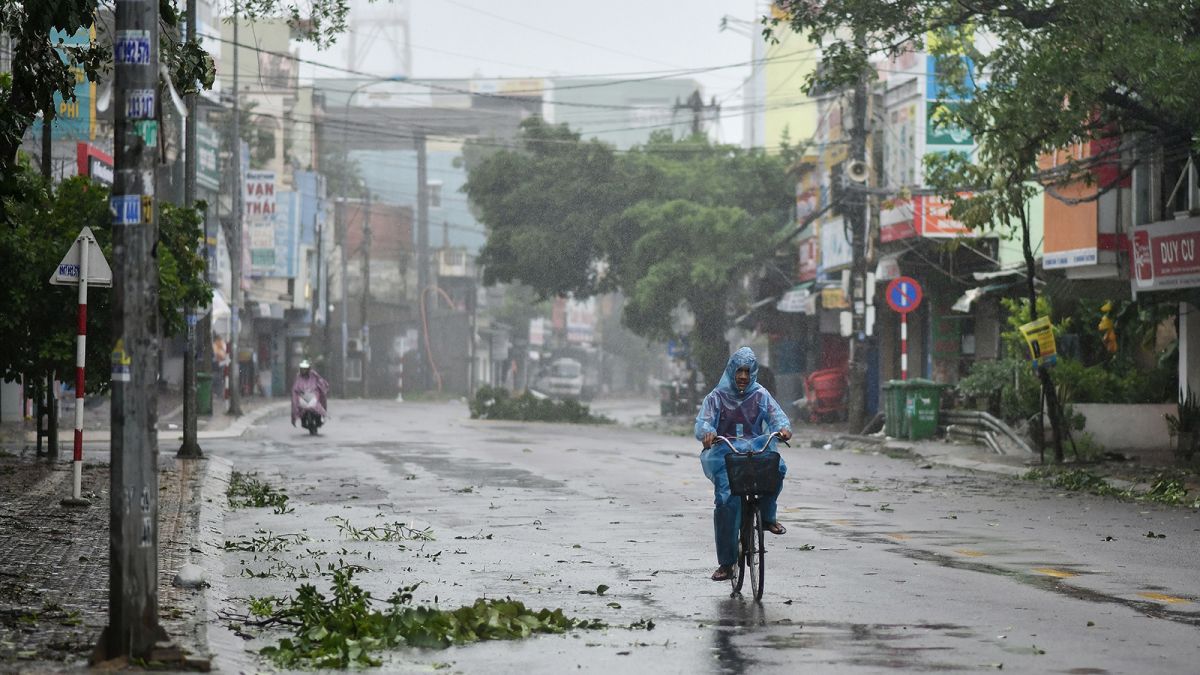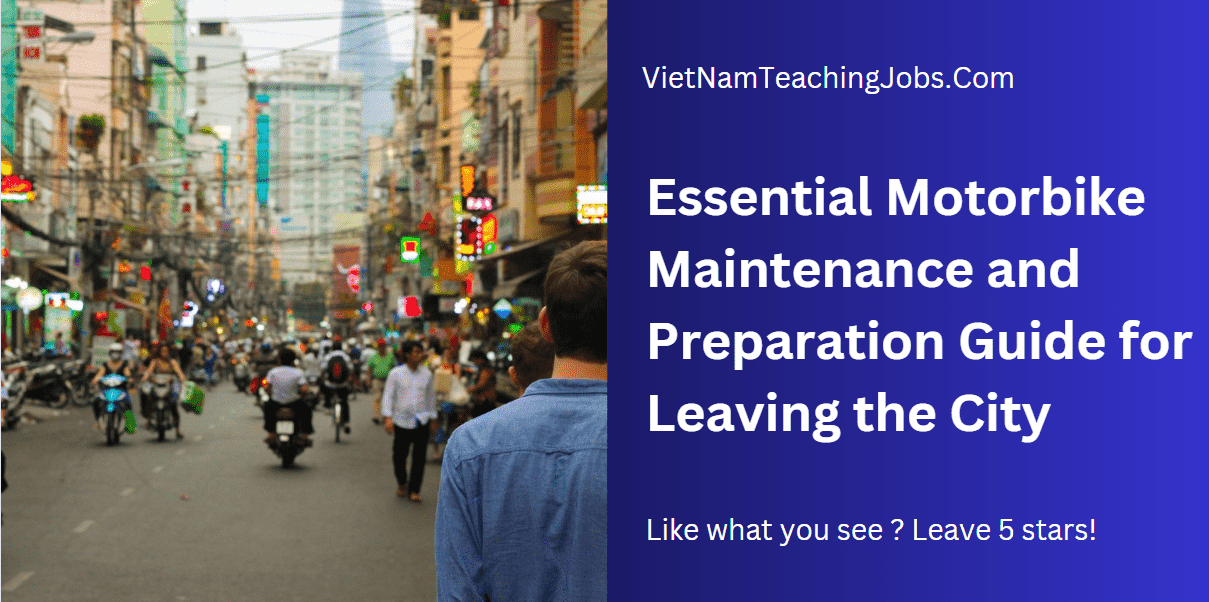Journey to Vietnam is a sensory adventure that unfolds across diverse landscapes, ancient traditions, and vibrant cultures. However, the timing of your visit can significantly influence the experience, as Vietnam’s climate varies dramatically from north to south and across distinct seasons. In this comprehensive guide, VTJ unveils the best time to visit Vietnam, both by month and region, offering information on festivals, and local events that shape the country’s dynamic.
>>>Read more: 15+ Famous traditional craft villages in Vietnam you should visit
Best Time To Visit Vietnam By Region
Mountainous Far North (Sapa, Ha Giang, Bac Ha, Mu Cang Chai)
Best Time To Visit Vietnam By Region – Mountainous Far North (Sapa, Ha Giang, Bac Ha, Mu Cang Chai)
The mountainous far north of Vietnam, including destinations like Sapa, Ha Giang, Bac Ha, and Mu Cang Chai, showcases breathtaking landscapes and diverse ethnic cultures. The climate in Sapa and the northwest region of Vietnam, which includes Mu Cang Chai, undergoes two distinct seasons. The dry season extends from October to late March, while the wet season from April to September. Particularly in December and January, the region can experience extremely cold and frosty conditions, especially during the night.
For those venturing into the northeastern region, such as Ha Giang, the optimal time for travel is during the dry season from April to October. However, it’s important to note that December and January can be quite cold in Ha Giang. It is advisable to avoid traveling to Ha Giang during the rainy season from May to September, as the weather conditions may not be conducive to a pleasant travel experience.
If trekking is on your agenda, Sapa and Mu Cang Chai offer the best conditions between September and November, as well as from March to May. During these periods, daytime temperatures range from 15-28°C, with night-time temperatures ranging from 10-18°C. While trekking and cycling are feasible throughout the year, the winter months can be chilly, and the summer season tends to be wet. Therefore, to ensure an enjoyable trekking experience with favorable weather conditions, planning a visit during the recommended months is advised.
>>>Read more: 10 Best hiking trails for trekking in Vietnam you should not miss
North Vietnam (Hanoi, Halong Bay, Cuc Phuong, Mai Chau & Ninh Binh)
Best Time To Visit Vietnam By Region – North Vietnam (Hanoi, Halong Bay, Cuc Phuong, Mai Chau & Ninh Binh)
Hanoi and North Vietnam exhibit a clear demarcation between winter and summer seasons. The cool and dominant dry winter prevails from November to April, characterized by average temperatures ranging from 17-22°C. These months provide pleasant temperatures and lower humidity, creating an ideal environment for exploration. The coldest period occurs between January and March.
Summer, on the other hand, spans from May to October, marked by hot and humid conditions, accompanied by the region’s high rainfall. July to September typically witness the highest precipitation levels. Please consider before choosing to travel at this time.
>>>Read more: A year of weather in Hanoi
Central Vietnam (Hoi An, Danang, Hue, Dalat, Quy Nhon & Nha Trang)
Best Time To Visit Vietnam By Region – Central Vietnam (Hoi An, Danang, Hue, Dalat, Quy Nhon & Nha Trang)
For Hue, Danang, Hoi An, these cities experience a tropical monsoon climate. The best time to visit is during the dry season, which typically runs from February to August. During this period, you can expect warm temperatures and minimal rainfall, making it ideal for exploring these historic and cultural destinations.
Situated in the Central Highlands, Dalat has a cooler climate compared to other parts of Vietnam. The dry season from November to March is preferable for travel, with temperatures ranging from 10-20°C. The city is known for its French colonial architecture, waterfalls, and flower gardens.
These coastal areas such as Nha Trang, Quy Nhon enjoy a more prolonged dry season, typically from January to September. Nha Trang is particularly popular for its beautiful beaches and is best visited from January to August. Quy Nhon is known for its less crowded beaches and historical sites.
>>>Read more: Marble Mountains: A stunning natural wonder in Danang
South Vietnam (Ho Chi Minh City, The Mekong Delta, Phu Quoc, Phan Thiet)
Best Time To Visit Vietnam By Region – South Vietnam (Ho Chi Minh City, The Mekong Delta, Phu Quoc, Phan Thiet)
Located in the southern part of Vietnam, Ho Chi Minh City experiences a tropical climate. The dry season is from November to April, with temperatures ranging from 25-35°C. This period is suitable for exploring the city’s vibrant culture and historical landmarks. The Mekong Delta has a similar climate to Ho Chi Minh City. The dry season is preferable for exploring the delta’s unique riverine landscapes and floating markets.
Phu Quoc, located off the coast of Cambodia, has a tropical climate. The dry season is from November to April, making it an excellent time to visit for beach activities and water sports.
Phan Thiet is known for its sand dunes and coastal scenery, Phan Thiet experiences a dry season from November to April. This is the best time to visit Vietnam for beachgoers and those interested in exploring the natural beauty of the area.
>>>Read more: Top 12 most dangerous passes in Vietnam you should know (p.1)
>>>Read more: Top 12 most dangerous passes in Vietnam you should know (P.2)
Best Time To Visit Vietnam By Month
January
January in Vietnam brings generally dry conditions to the north and south, although central Vietnam still experiences the tail end of its rainy season. The northern regions around Hanoi and Halong Bay are cooler during this month, with temperatures as low as 5°C in the mountainous far north during mornings and evenings. Additionally, January often hosts Tet Nguyen Dan, the Lunar New Year, leading to a festive atmosphere, but also crowded accommodations as hotels fill up. It’s noteworthy that many restaurants and shops close their doors during this major celebration.
>>>Read more: 10 Most Famous Coffee Chains in Vietnam you should try once
February
February in Vietnam is a popular month for travel, characterized by warm, dry, and sunny weather throughout much of the country. This makes it an ideal time for outdoor activities such as cycling and trekking, with coastal destinations like Hoi An and Danang attracting sunseekers to their beaches. However, travelers should be aware that Tet Nguyen Dan (Lunar New Year) can fall in February, leading to high demand for accommodations and the temporary closure of numerous shops and restaurants as part of the nationwide celebration.
>>>Read more: Top 5 BEST and most FAMOUS cinemas in Vietnam
March
March heralds the beginning of the peak season in Vietnam, marked by warm and dry weather. While beach resorts become bustling, the southern regions start to experience uncomfortable heat towards the end of the month. March is particularly revered for cruising around Halong Bay, with clear skies prevailing. The weather is conducive for trekking and cycling in the northern and central parts of the country.
>>>Read more: Wi-Fi in Vietnam: Useful tips for staying connected
April
As Vietnam transitions into April, beach resorts continue to draw crowds, making it an ideal time for family vacations. The weather remains idyllic, especially for activities like trekking in the blossoming mountains of the north or cycling through the serene countryside. While sun enthusiasts can relish coastal delights, it’s worth noting that temperatures in the southern regions are on the rise. Despite the occasional shower signaling the approaching monsoon, April is a favorable time for family travel to Vietnam.
>>>Read more: 10 Best restaurants in Vietnam you must try 2023
May
May marks the tapering off of the peak tourist season in Vietnam. In the south, where temperatures can soar to 40°C, seeking refuge in the northern mountains, Hanoi, or the central coast is advisable. Ho Chi Minh City becomes hot and humid as the monsoon season approaches, bringing brief afternoon showers. Northern Vietnam experiences occasional rain, but temperatures are more moderate. May still offers pleasant conditions for activities like hiking and cycling, with the added benefit of potential off-season bargains as the peak period winds down.
>>>Read more: Top 10 places to teach surfing in Vietnam you should know
June
As Vietnam transitions into June, the monsoon season takes hold in the southern regions. Short, intense showers characterize the steamy south, occasionally causing sporadic flooding in parts of the Mekong Delta. Trekking in northern Vietnam becomes inadvisable due to heavy rainfall, but the central coast, particularly in cities like Hoi An and Da Nang, remains warm and mostly dry—ideal for beachgoers.
>>>Read more: Top 10 Vietnamese street food you can find anywhere in Saigon
July
July in Vietnam mirrors June with abundant rain in both the northern and southern regions, making trekking and cycling unsuitable, and even leading to potential flooding in the Mekong Delta. However, the central coast, while hot and humid, remains inviting with temperatures reaching 30°C. Remote areas might be challenging to access due to heavy downpours.
>>>Read more: 12+ best places for having massage in Ho Chi Minh City
August
As August unfolds, the picturesque central coast, including Da Nang and Hoi An, continues to enjoy lovely weather. While southern Vietnam experiences regular showers, it remains dry enough for enjoyable activities. However, heavy rain dominates the north and central Highlands, limiting trekking possibilities.
>>>Read more: 15 Best quality massage in Hanoi you should know
September
September marks a transitional period in Vietnam. While the north and south still experience wet conditions, the end of the month sees a decrease in rainfall. In central Vietnam, early September might offer a chance for a beach vacation, but as typhoon season approaches, rain and storms intensify along the coast and highlands.
>>>Read more: Top 3 extreme sports you can experience in Hanoi
October
October in Vietnam brings a delightful transition as the rains ease off in both the north and south. The temperatures are warm yet not overwhelming, providing a pleasant atmosphere for travelers. While central Vietnam remains wet and stormy, this is an ideal time for trekking and cycling vacations. Witness the picturesque countryside as villagers diligently harvest rice, and the floating markets of the Mekong Delta brim with abundant produce.
>>>Read more: 5 famous restaurants in Danang that’s perfect for a night out
November
As November unfolds, Vietnam experiences the onset of another high season. This month stands out for its favorable weather, being hot and dry in both the north and south. The mountainous north, particularly around Sapa, offers pleasant conditions for trekking, while southern beaches showcase their stunning beauty. Clear skies make November the optimal time for cruising around Halong Bay, creating an ideal setting for small group cycling vacations in Vietnam.
December
December brings a gradual easing of rains in central Vietnam, with hot and dry conditions prevailing, gradually cooling off towards the end of the month. Travelers planning a Christmas getaway to the beautiful beach resorts in the south should book early, as December is a popular time to visit. While northern and southern Vietnam enjoy warm and dry weather, higher altitudes may experience chilly nights. The rains in central Vietnam diminish towards the end of December, although some showers can still be expected.
Worst Times To Visit Vietnam (Monsoon And Typhoon Seasons)
While Vietnam boasts diverse landscapes and rich cultural experiences, there are certain times of the year that are less favorable for travel due to the monsoon and typhoon seasons. These periods are characterized by heavy rainfall, increased humidity, and the potential for tropical storms. The worst times to visit Vietnam in terms of weather conditions are:
Monsoon Season (June to August)
Worst Times To Visit Vietnam – Monsoon Season (June to August)
- Northern Vietnam: Experiences high humidity, occasional heavy rains, and warm temperatures. Hanoi and Halong Bay may see increased precipitation, impacting outdoor activities.
- Central Vietnam: June marks the onset of the rainy season, with frequent showers and a higher risk of typhoons in July and August. Travelers to cities like Hue and Hoi An should be prepared for wet conditions.
- Southern Vietnam: While not as intense as in the central regions, the south experiences increased rainfall. Ho Chi Minh City and the Mekong Delta may see short but heavy rain showers.
Typhoon Season (August to November)
Worst Times To Visit Vietnam – Typhoon Season (August to November)
- Central and Northern Vietnam: These regions are more susceptible to typhoons during this period. Typhoons can bring heavy rain, strong winds, and potential flooding. Travel plans in September and October should consider the heightened risk of severe weather events.
- Southern Vietnam: Although less prone to typhoons, the south may experience indirect effects, including increased rainfall and stormy conditions.
Choosing the best time to visit Vietnam involves careful consideration of both the month and the region you plan to explore. Whether you’re drawn to the rejuvenating colors of spring, the warmth of summer, or the crispness of winter, planning your Vietnam adventure requires thoughtful consideration of its diverse climates, ensuring a journey enriched with cultural immersion and indelible memories.
FAQs
Which is the rainy season in Vietnam?
The rainy season in Vietnam typically occurs from June to August.
How many days are enough for a Vietnam trip?
A duration of 10 to 14 days is often considered sufficient for a comprehensive trip to Vietnam.
What is the best time to visit Hanoi?
The best time to visit Hanoi is generally from September to November when the weather is cooler and more pleasant.
Is September a good time to visit Vietnam?
September can be a good time to visit Vietnam, especially towards the end of the month. During September, the rainy season begins to subside in many parts of the country, leading to more favorable weather conditions.


